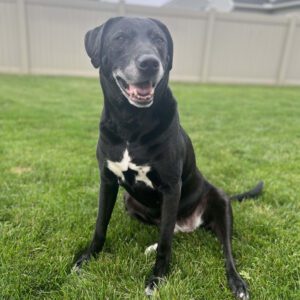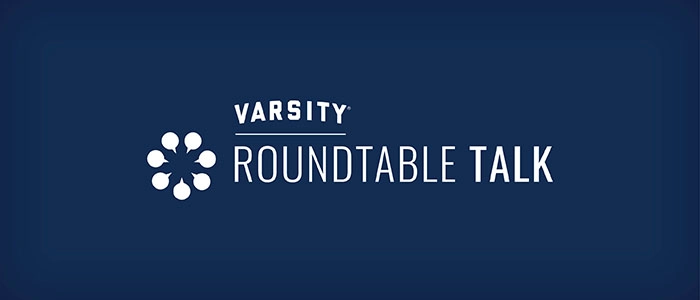Yesterday, we celebrated our 200th Varsity Sales & Marketing Roundtable. Over 50 attendees tuned in to hear special guest John Spooner, co-chief executive officer of Greystone Communities, share his presentation, “Understanding the New Consumer Mindset.” Here are some highlights of John’s fascinating discussion.
More Than a Retirement Counselor
You may be called a retirement counselor or marketing assistant, but you have to think of yourself as the chief revenue officer. The organization won’t thrive unless you have success bringing new residents into the community.
The Three Buckets of Prospects
How many clients do you have that are sold on your community, but still won’t move forward? We put prospects into three buckets:
- Planners: They know what they want and they move through the process relatively fast.
- Procrastinators: A giant bloat in your database: They’re sold but they’re just not moving forward.
- Crashers: They wait too late, and come in after they’ve had a health scare. Now they need AL, but they really want IL.
‘I Understand and Want the Benefits of Your Community, BUT …’
The procrastinators say things like, “I couldn’t leave my home.” “Let’s talk next year.” “I’m not ready.” “I need to think about this.”
We call those F.U.D. (fear, uncertainty and doubt). Those are people that we have trouble moving through the process. Their objections are not unique. Sometimes it’s an emotional objection, sometimes it’s a financial objection. They toggle back and forth and switch to another one after you’ve got them covered. So the question is, at what point do we lose them? When the reality sets in that they have to make a decision.
Selling Senior Living Is Hard, Buying Is Harder
Selling is a difficult job. But buying is harder because prospects are coming into it without a lot of knowledge, trying to make a decision that most of them don’t want to make. That’s why you have so many people in your bloated database.
Prospects Have Created a Living Terrarium — and They Want to Stay There
We’re genetically engineered to conserve energy by minimizing energy expenditure. It’s easy to say, “I can’t move because I can’t change my doctor, my plumber, my friends.” Prospects have created this living terrarium that they are living in — they are not going to expose themselves to self-imposed chaos. They say, “I’m going to hit the easy button and live in my ecosystem.” Ecosystem equals status quo.
Battling ‘Status Quo’ Bias
Everything that prospects think or say is about seeking information that confirms their decision to do nothing and maintain the status quo. They are so fearful of making a mistake for an uncertain outcome that they can’t move forward. Simply put, their fear of messing up is more than their fear of missing out. Our job is to break the gravitational pull of that senior status quo. When you can move their status quo so that it becomes less than the community, everyone wins.
Your competition isn’t another community across town. Your competition isn’t “staying in their own home.” The REAL competition is NO DECISION. Some seniors are playing the same “no-decision” game with every community in town. They live in a constant state of indecision. You need to know how to recognize it and overcome it. They are thinking, “What if your community isn’t what I want?” Your job is to give them confidence that they’re going to go in there and be OK.
Prospects do not want to talk about you or your community. They want to talk to you about them. When you go to the doctor, you don’t want to watch a video of their latest operation, you want them to talk to you about your problem. The same goes for senior living. Don’t give a long description of the community … the choice of three entrees … the meal points program … the beautiful apartments — prospects want to talk to you about them.
Going Beyond Discovery 101 to ‘Radical Candor’
There are standard discovery questions that we all use. But it really needs to be about breaking the status quo. It’s about the art of personal engagement and addressing uncomfortable topics to give prospects personal insight. You have to learn to attack their outcome uncertainty and reframe questions to get them to understand why they have to break the status quo.
That requires radical candor. You have to challenge them by asking uncomfortable questions, like:
- Does the next five years of your life look like the last five years?
- That house isn’t working for you anymore, is it?
It might be unpleasant and it might be scary for you to be this forward, but it’s OK. The first two to three questions are difficult, but you will be surprised at the great outcomes. Don’t talk to prospects about all the contract options — talk to them about how they can break out of their little terrarium. Radical candor is about caring personally and challenging directly.
Your job is to ask and then to reframe the probing question into a statement that assures them they have the confidence to make this decision. Challenge their positions and biases, and then stand up and make a recommendation to them. You are the subject matter expert. You are the one they have turned to to help them spend the last years of their life. From your discovery, you know what is important to prospects. You can start with “This plan is a popular option” or “I personally prefer this option.” It shows that you have diagnosed their needs and have a personal recommendation.
Indecision Junkie Recovery Program
To sum up, here are six steps to indecision junkie recovery.
- Own the flow of information.
- Employ “radical candor.”
- Anticipate objections and indecision.
- Use your discovery knowledge.
- Community > Risk > Status Quo
- Make a personal recommendation.
What Your Community Can Offer Prospects
Security. Predictability. Safety. Dependability. Reliability. Permanence. These qualities represent what your community can offer prospects — the stuff deep down in their emotions that they’re looking for. You just need to wash away the fear by leading them through the mire and muck of “status quo bias” — giving them confidence to make a decision.
 Jovie
Jovie L.J.
L.J. Lincoln
Lincoln Louie
Louie Mia
Mia Mia Wallace
Mia Wallace Mila
Mila Penny
Penny Taffy
Taffy Teddy
Teddy Willoughby
Willoughby Winnie
Winnie